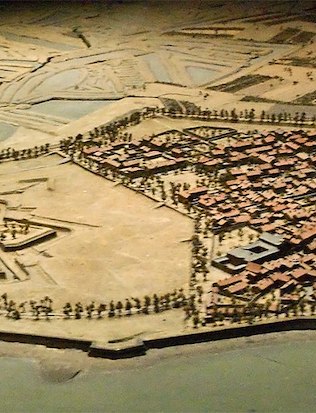I was in France during much of the summer, preparing a new television series on the dauntingly large theme of The Art of France – and searching for threads to guide me through the labyrinth. One of the most memorable places I visited was the remote chateau in Bordeaux to which Michel de Montaigne retreated, in later life, to write his famous Essais: ten volumes of wonderfully eccentric mental meanderings, which range from reflections on the nature of friendship, and the limitations of human knowledge, to speculations about why human beings have thumbs, or what it might be like to be a siamese twin.
Montaigne wrote his essays – which were once described by Gore Vidal in a fit of enthusiasm as the only book anyone need ever read – during the second half of the sixteenth century. So it is all the more remarkable that the study in which he wrote them should still survive. It is a small round room at the top of a little tower or turret, attached to the chateau in which he once lived, which can only be reached by ascending a spiral stone staircase as higgledy-piggledy as Montaigne’s thought itself. His books and desk have gone, but the wooden beams holding up the ceiling are still there, each one still inscribed with a quotation from the Bible or one of his favourite classical writers, often Socrates, Seneca or their Stoic followers. The feudal barons of the French Middle Ages might have had a single motto, but Montaigne was a Renaissance man with a restless mind and he had a hundred of them: “For every opinion there is a counter opinion”; “We wander in darkness and cannot see the truth”; “The only certainty is that nothing is certain, and nothing is less noble...


